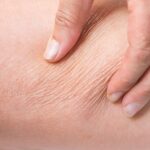OPTIMAL HEALING IN A SLIGHTLY MOIST ENVIRONMENT
When an injury to the skin occurs, the process of healing begins. A cascade of physiological events commences which often includes bleeding or drainage. The moisture at the wound site is an indicator that an increase in the delivery of oxygen, nutrients, growth factors and the ability to fight infection is occurring.
Optimal wound healing is known to take place in a slightly moist environment, and at body temperature. The concept of moist wound healing has been around for many years and conceptually, attempts to create the optimal environment as described, for tissue repair and healing to take place. Moist wound healing has led to the development of literally thousands of products, including dressings and biological compounds, all designed to maintain moist wound healing and the environment conducive to expedite wound healing.
While the development of such technologies has certainly been an essential part of modern medicine, the fact remains that the body will heal itself, if the conditions to do so are maintained. Sound nutrition, exercise, rest, and hydration are all essential components to not only a healthy lifestyle, but also to recover from injuries and wounds. Chronic or non-healing wounds do not usually occur in otherwise healthy persons. Some underlying medical condition is usually a factor in the chronicity, to which, identifying the underlying cause and addressing it, is key to the reparative process the body will undergo.
Moist wound healing and the holistic approach to managing wounds leads to the main topic of this discussion, that being the importance of hydration and how dehydration can negatively impact wound healing.
THE IMPORTANCE OF HYDRATION
We know that at least 2/3 of our body is comprised of water, but we do not have the capability to store water, therefore we must replenish water that has been used in metabolic function through drinking and ingesting of food. Water is needed at the cellular level, delivering oxygen and nutrients, and helping maintain proper chemical balance.
Dehydration is common in otherwise healthy individuals and is addressed usually not long after the feeling of thirst is recognized. At that moment, the body may be already dehydrated by 1-2%. While thirst is an indicator that the body needs fluid intake, so can the presence of dark or concentrated urine. Drying of the skin can be another indication that more chronic dehydration is occurring, and a phenomenon known as “tenting” can also be observed.
A simple test to assess for dehydration and tenting of the skin is to gently pinch an area on the back of the hand. Tenting is the maintaining of a localized triangular or “tent” appearance after releasing the skin at the pinched area. Persons who are dehydrated have less skin elasticity and are at greater risk for developing tissue injuries and open wounds.
RISKS OF DEHYDRATION WHEN HEALING
Among persons who are most susceptible to dehydration are those with decreased mobility as well as the elderly. These groups are potentially less able to rehydrate when thirsty, and should have access to fluid intake addressed in the setting they live in. Additionally, those with cognitive impairment, dementia, fear of incontinence (think of persons on diuretics to manage heart conditions), as well as those who may be unable to physically pour a glass of water, are at high risk for dehydration.
When dehydration and the presence of a wound are concomitant, the healing process is hindered due to decreased delivery of oxygen and nutrients, as well as a decrease in the signaling capability between cells that occurs during the reparative process. When a wound is present, maintaining optimal hydration internally is just as important (arguably more important) as it is at the wound site through topical dressing selection.
GUIDELINES
Guidelines have been established as far as how much fluid we should consume each day. For a typical adult, this is approximately 1500 ml, or eight 8-ounce glasses of water, but factoring in the weight of an individual, a little bit more than 1 ounce per every 2.2 pounds is recommended. A 175-pound person should consume about 80 ounces of fluid per day to maintain hydration. (Divide weight by 2.2 to determine how many ounces are needed.
For those who are at risk or are currently dealing with a chronic wound, here are some tips to avoid dehydration:
- Keep drinks accessible
- Minimize caffeinated and alcoholic beverage as both act as diuretics and will increase frequency of urination and therefore, dehydration
- Start each day with a glass of water
- Include fruit and vegetables as part of daily consumption as both contain significant amounts of water, as well as important vitamins and nutrients.
- Encourage intake and note the preferences of the individual whose intake is being monitored
Water is still the best substance to consume for maintaining good health, and certainly when a wound is present. It has no calories; its benefits are essential to life and it is plentiful! Consuming water can also quell hunger, so if weight loss has been recommended, consider drinking a glass of water before each meal, and drinking water before reaching for a snack. You’ll probably notice positive changes including more energy!


